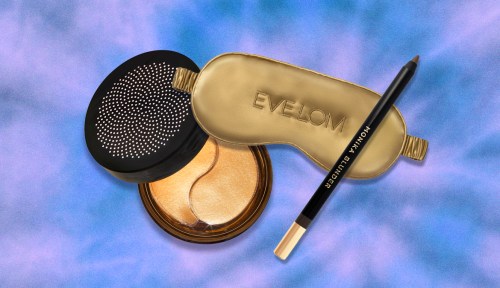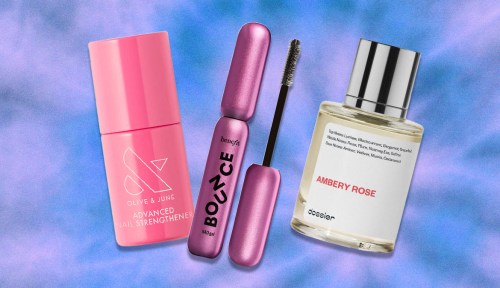Your foundation is the base of your entire makeup look, so if your application’s not down pat, it can wreck the rest of what you put on—concealer, blush, you name it. That’s why I copy foundation tips from makeup artists all the time to make sure my complexion’s perfectly primed. And yet—I still tend to get some cake-y action on certain spots of my face.
“People tend to over-apply foundation to their T-zone area—meaning their forehead, nose, and chin—and that can cause the product to build up and become cake-y,” says Gabriel De Santo, makeup artist and CEO of Gabriel Cosmetics. “Skin problems, like excess oil or intense dehydration, tend to be amplified in that section of your face, which can also cause your foundation to appear uneven, cake-y, or flaky.”
Ironically enough, the T-zone is the area that usually needs more coverage. Like, my chin has post-inflammatory hyperpigmentation, the area around my nose gets red more than anywhere else on my face, and my forehead sometimes gets shiny—so I like to put foundation on those areas specifically. So what can ya do?
“I think any area can look cake-y if the skin isn’t well hydrated, the makeup formula is wrong, or the application is too heavy,” says Merrady Wickes, makeup artist and beauty director at The Detox Market. “You want to go as lightweight as possible in areas where your makeup tends to gather or crease.” She also deals with broken capillaries around her nose area, as many people do, but says that there are definitely ways to get coverage that actually looks natural and stays put. Here’s what you can do to apply foundation in those T-zone areas:
1. Be precise: “Ignore the Instagram tutorials where people are literally dripping product directly onto their faces,” says Wickes. Instead, just drop a small amount of your foundation onto the back of your hand, then use your fingertip to dot the product to areas where you need it. “This tends to be the nose, chin, tops of cheeks, and between and above the eyebrows if you get redness or discoloration there,” she says. “Then use your fingertips or a synthetic brush to buff the product out until it’s seamless.”
2. Use a sponge: Once you’re done with that step, Wickes says it’s key to use a sponge. “Get your makeup on where you want it, blend it in, then pat a lightly dampened sponge over the top,” she says. “This melts the product into your skin and also picks up any excess product for a more natural finish.” Pro tip: Mist your skin or the sponge for an “extra plumping effect,” she says.
3. Don’t be afraid of primer: Though it’s easy to skip on primer, it can be useful if your foundation gets cake-y in certain spots. “Primers are a great option if makeup tends to gather in your pores or separate by midday,” says Wickes. “The Alima Pure Smooth and Prime is particularly good for large pores or oily T-zones, or the Vapour Gentle Illuminating Primer is wonderful if your dry skin eats your makeup or cracks.”
You can also copy this tip for how to make foundation look natural. Or you can just wear concealer without foundation—here’s how to do it.
Sign Up for Our Daily Newsletter
Get all the latest in wellness, trends, food, fitness, beauty, and more delivered right to your inbox.
Got it, you've been added to our email list.











